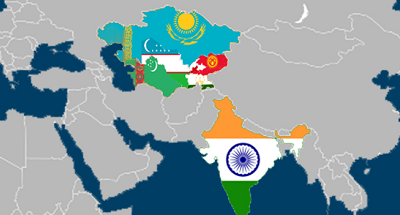Uzbekistan’s Connectivity Approach: Will India Reconnect with Central Asia?
DIDPress: Diplomat magazine recently argued that despite India’s position as the largest economy in South Asia, its limited presence at the Termez Dialogue has raised questions about its commitment to “Connect Central Asia” policy.

For years, connecting Central and South Asia has been an ambitious yet elusive goal. Though both regions possess high potential for economic cooperation, progress has remained slow. In this context, Uzbekistan has emerged as a regional leader, placing Afghanistan at the heart of its connectivity-driven policies.
New Steps: The Termez Dialogue
The first “Termez Dialogue” was held in May 2025, bringing together over 200 participants, including officials, experts, and representatives from both public and private sectors.
Three key features of the event included:
1. Multinational, multi-sector participation to explore avenues for intra- and inter-regional cooperation.
2. Emphasis on the private sector and a bottom-up approach to gain local support.
3. Addressing security challenges, particularly concerning Afghanistan, through trust-building and multilateral cooperation.
Termez’s Strategic Role
Due to its historical and geographic significance along the Afghan border, the city of Termez has emerged as a strategic hub for regional connectivity. Key initiatives include:
• Airtom International Trade Center, designed to facilitate trade with Afghanistan and host Afghan merchants.
• Termez Cargo Center, serving as a logistical and humanitarian hub for aid deliveries to Afghanistan and Afghan refugees in Iran and Pakistan.
Key Connectivity Projects
Uzbekistan has focused on two major connectivity projects:
1. Trans-Afghan Railway, linking Uzbekistan, Afghanistan, and Pakistan to Arabian Sea ports.
2. Trans-Afghan Multimodal Transport Corridor, with an annual capacity of 20 million tons of cargo, partially financed through barter deals involving wheat and construction materials.
Additionally, the creation of a free trade zone for Afghanistan in Termez aims to support Afghanistan’s economic integration and reduce instability through economic engagement with the Taliban.
Opportunities for India
Uzbekistan has designed these projects to also connect with Iranian ports like Chabahar—potentially easing India’s access to Central Asia. Other related initiatives such as CASA-1000 (electricity transmission) and the TAPI gas pipeline (Turkmenistan-Afghanistan-Pakistan-India) will also require international investment and support.
India’s Role
Despite its economic strength, India’s low-profile participation in the Termez Dialogue casts doubt on its seriousness in pursuing the “Connect Central Asia” agenda.
However, India and Uzbekistan already share a Strategic Partnership Agreement (2011) and a Security Cooperation Agreement (2019). Uzbekistan continues to offer economic opportunities for Indian firms, and both countries have identified Afghanistan as central to their regional strategies.
Conclusion
Uzbekistan, as a middle power, is now leading a regional connectivity agenda centered on Afghanistan. India, as a rising global player, must decide whether it will engage actively or allow rivals to take the lead. For India, revitalizing its “Connect Central Asia” policy through participation in Uzbek-led projects could prove to be a strategic turning point.